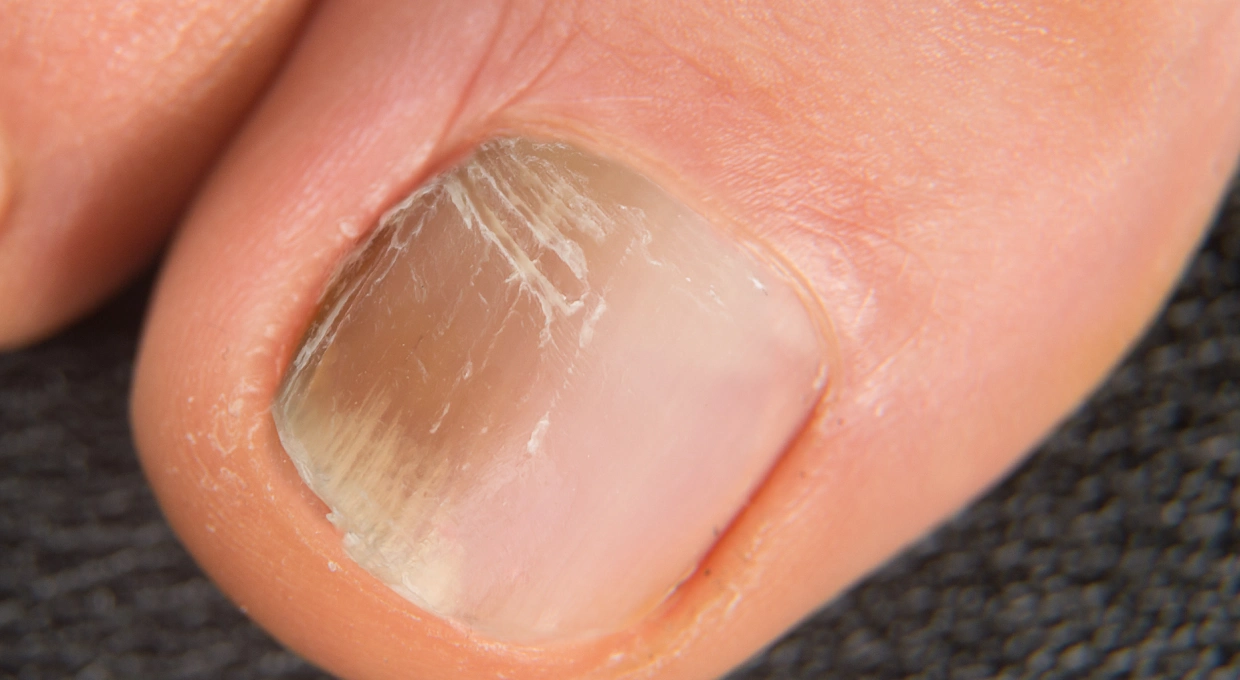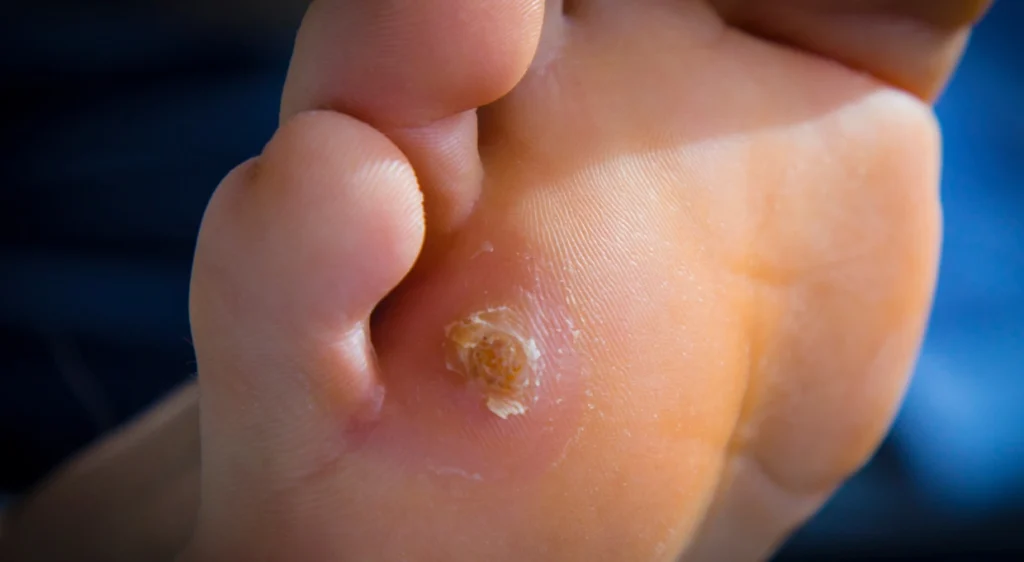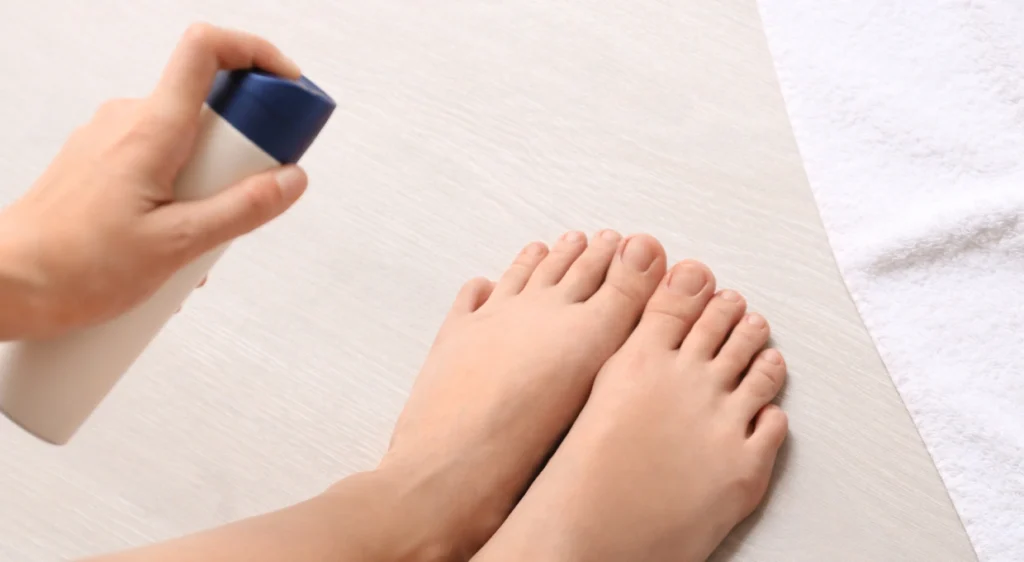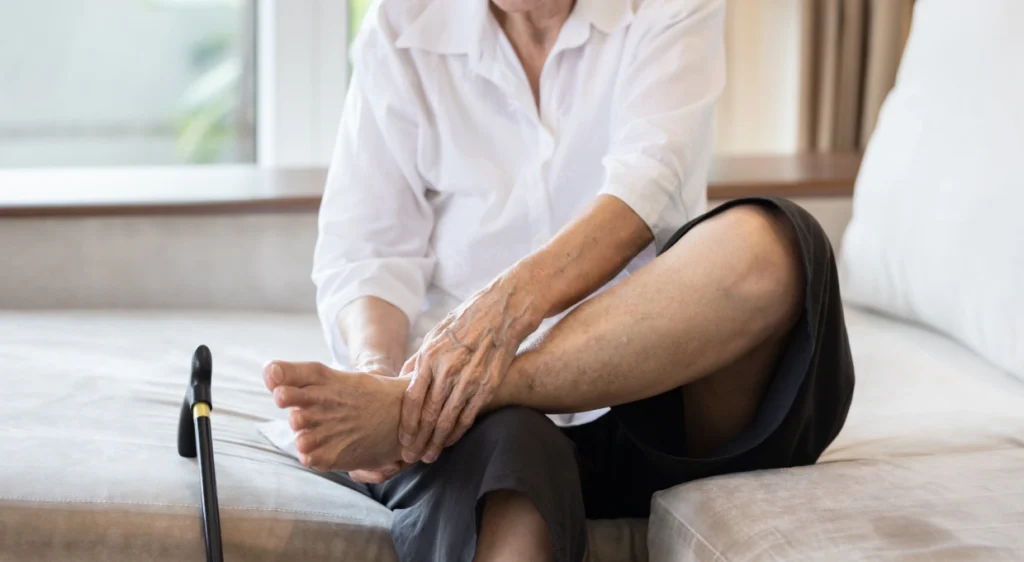Brown nails is a clinical condition that is of concern to many patients, especially when it appears suddenly or affects only one nail. This unusual coloration may manifest as a longitudinal band, an irregular spot or a generalized change in the color of the nail plate. Although in many cases the cause is benign, in others it may indicate serious conditions that require specialized medical attention.
At Clínica San Román we approach this type of problem with a comprehensive approach, based on years of experience in advanced clinical podiatry. In this article we will detail the main causes, the diagnostic approach and the most appropriate treatments depending on the origin of the brown nail, as well as recommendations for prevention and control.
What exactly is a brown nail?
The term “brown nail” refers to an alteration in the usual coloration of the nail, which changes from its usual pink and translucent tone to a brown, black or dark brown pigmentation. This change can affect both fingernails and toenails, although in podiatry it is more frequently observed in the toes, due to increased exposure to pressure, friction and trauma.
This coloration can take different forms: a vertical stripe known as striated melanonychia, a circular or oval spot, or a diffuse hue covering the entire nail. Each of these forms may be associated with different causes, so it is essential to make a proper clinical assessment.
Main causes of brown nails
There are multiple causes for the appearance of a brown nail, from traumatic and fungal reasons to systemic diseases or even skin cancer. Here are the most frequent ones:
1. Subungual trauma and hematomas
Repetitive minor trauma (e.g. running or wearing tight shoes) can cause capillaries under the nail to rupture. This results in a subungual hematoma that manifests as a brown or blackish stain. Although usually benign, if the spot does not move with the growth of the nail or appears with no apparent bump, it should be investigated further.
2. Fungal infections (onychomycosis)
Onychomycosis can cause changes in nail coloration, with yellow, brown or greenish tones, as well as thickening, brittleness and deformity. Diagnosis is made by mycological culture and direct examination, and treatment may be prolonged, with topical or oral drugs.
Melanonychia
Melanonychia is the presence of brown or black pigment due to increased melanin in the nail matrix. It can be physiological (in dark-skinned or elderly people) or pathological. In the latter case, it may be due to a nevus or, in severe cases, to a subungual melanoma, a type of cancer that requires early detection.
4. Drug-induced pigmentation
Some drugs such as those used in chemotherapy, antimalarials or antibiotics (minocycline, doxycycline) can induce nail pigmentation as a side effect. This color change usually affects several nails symmetrically and may be reversible after discontinuation of treatment.
5. Systemic diseases
Some chronic pathologies such as Addison’s disease, chronic renal insufficiency, vitamin B12 deficiency or endocrine disorders can be reflected in the nails, generating color alterations. In these cases, brown nails are only one of several clinical signs that occur together.
6. Exposure to chemicals
Handling chemical substances without protection, such as dyes, cosmetics or industrial products, can pigment the nail surface. This pigmentation is usually superficial and reversible, but should be checked if it persists longer than usual.

Clinical and podiatric diagnosis of brown nails
Proper diagnosis of a brown nail is essential to rule out serious pathologies and guide treatment. At Clínica San Román we perform a complete evaluation protocol that begins with a detailed anamnesis: the patient is questioned about the evolution of the color, history of trauma, use of drugs, systemic symptoms and family history.
Subsequently, a physical inspection of the affected nails is performed. Signs such as asymmetry, irregular edges, uneven coloration or bleeding are indicative of lesions that should be studied further.
Diagnostic tools
- Nail dermoscopy: allows visualization of internal pigmented structures without the need for invasive intervention. It is key to differentiate a benign melanonychia from a melanoma.
- Mycological culture: if onychomycosis is suspected, a scraping of the nail is performed to detect fungi or bacteria.
- Biopsy of the nail matrix: indicated in cases of suspected melanoma or atypical nevus. It allows to confirm the nature of the pigmentation.
- Serial clinical photography: useful for monitoring changes in pigmented lesions over time.
Treatments according to the cause of brown nails
The therapeutic approach to a brown nail will depend on the diagnosis. The following are the most common interventions:
1. Hematomas
In cases of severe pain, drainage may be performed under sterile conditions. If there is no discomfort, the hematoma may be reabsorbed with the natural growth of the nail, which may take 6 to 12 months.
2. Onychomycosis
Antifungal treatment can be topical (varnishes with amorolfine or ciclopirox) or systemic (terbinafine, itraconazole). Follow-up is important, as fungal infections often recur if not completely eradicated.
3. Benign Melanonychia
In these cases, periodic follow-up with dermoscopic control is recommended. If the lesion is stable and does not change over time, invasive intervention can be avoided.
4. Nail melanoma
When this pathology is detected, prompt action is required. Treatment is surgical and involves excision of the lesion with safety margins. In advanced stages it may require additional oncologic treatments.
5. Chemical or pharmacological pigmentations
These usually resolve when the causative agent is eliminated. They do not require direct medical treatment, but it is advisable to protect the hands or feet in future exposures.
When to see a podiatrist?
It is advisable to consult a podiatrist in the following cases:
- The brown spot appears suddenly without apparent cause.
- Only one nail is affected and it does not improve with time.
- The coloration presents irregular edges or various shades.
- The nail is deformed, thickened or painful.
- There is personal or family history of melanoma or skin disease.
Early diagnosis can be vital, especially if the cause is malignant. The earlier the origin is evaluated, the more effective the treatment will be and the better the esthetic and functional results.



